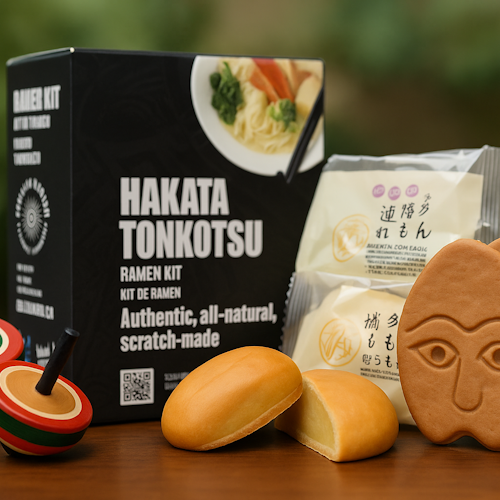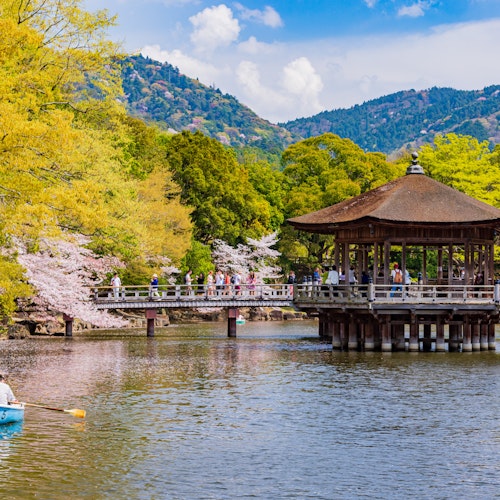
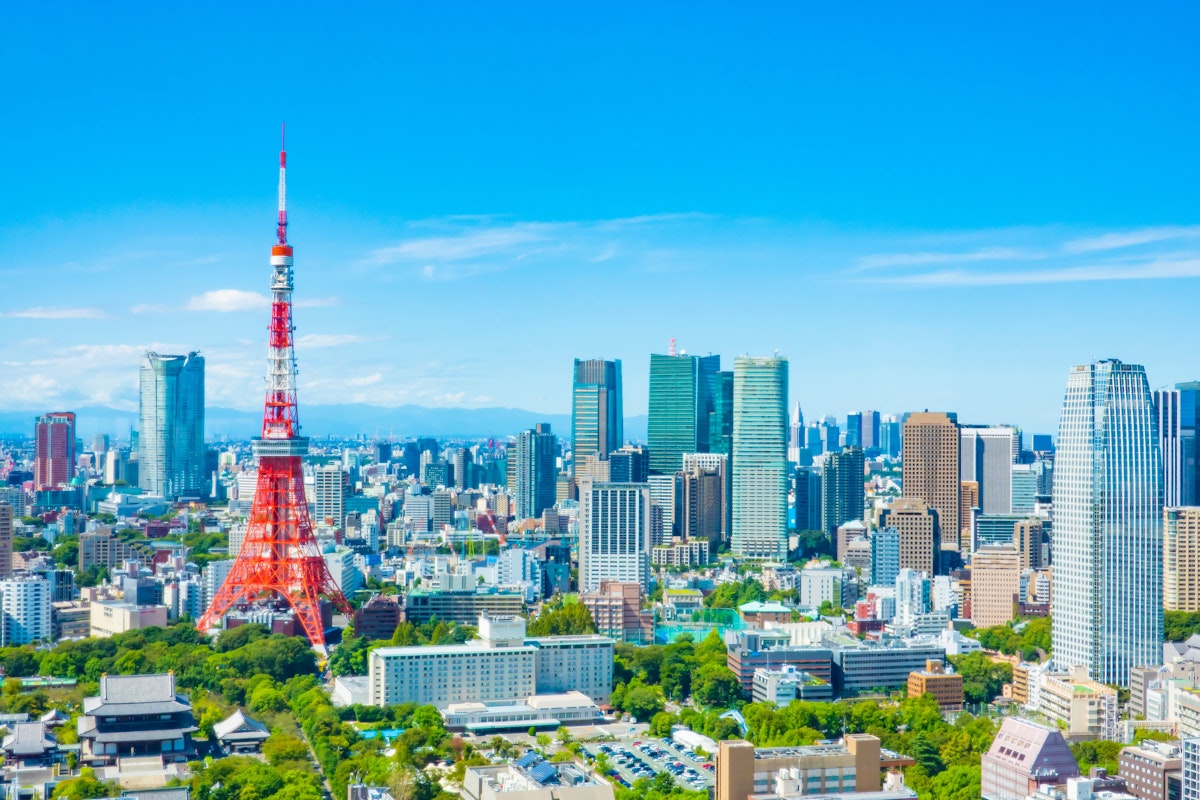
Planning a trip to Japan? That’s exciting! Japan is a beautiful and unique country with a mix of old traditions and modern technology. You’ll see peaceful temples, busy city streets, delicious food, and friendly people.
But before you hop on that plane, there are a few important things you should know. This blog post will help you get ready and avoid confusion once you arrive.
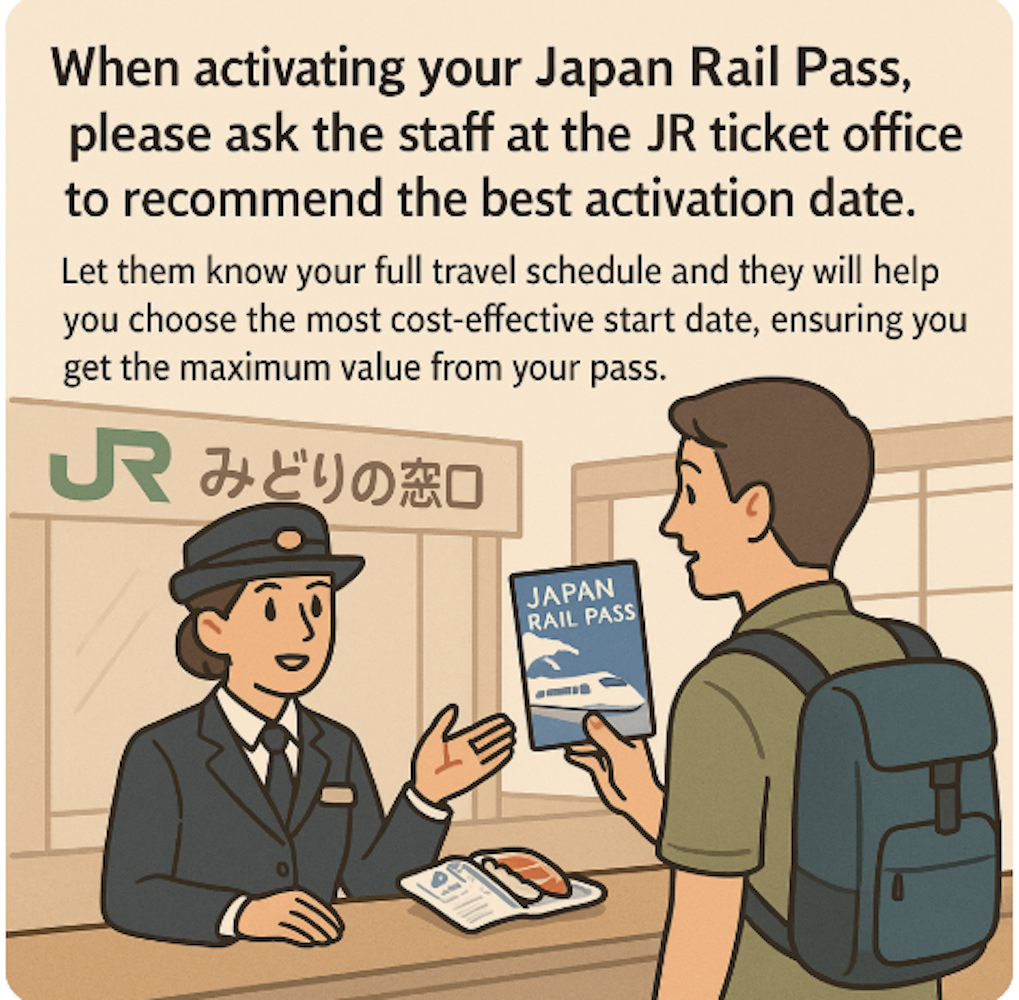
One of the most impressive things about Japan is its public transportation system. Trains are punctual, clean, and efficient—often the best way to travel across the country.
The JR Pass is a must-consider for travelers planning to explore beyond a single city. Available only to temporary visitors, it offers unlimited travel on JR trains—including most Shinkansen (bullet trains)—for a fixed duration (7, 14, or 21 days).
Tips for Using the JR Pass:
Activate your JR Pass strategically. It's best to activate it a couple of days before you plan to start long-distance travel, especially if you're staying in Tokyo or Osaka for a few days before venturing to Kyoto, Hiroshima, or other cities.
Reserve Shinkansen seats online. JR now allows online reservations for bullet trains. You can plan ahead and avoid lines at the station.
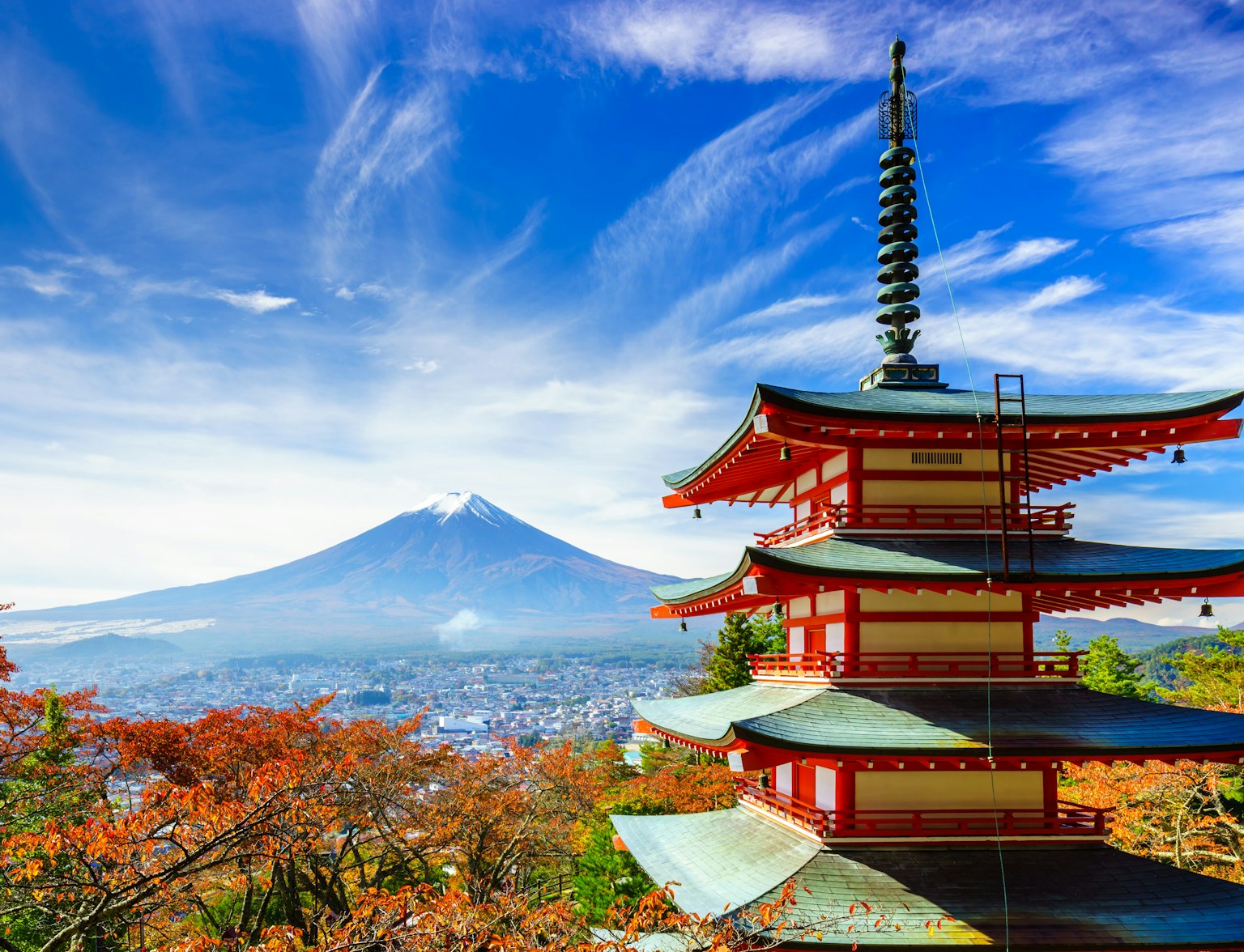
Discover Japan without limits with our all-access JR Pass!
In cities like Tokyo or Osaka, you’ll use local trains, subways, or buses. These often aren’t covered by the JR Pass. That’s where Suica, Pasmo, or ICOCA cards help.
These are prepaid cards you can tap at the gate to enter and exit trains — super fast and easy.
Use them for subways, buses, and even some shops or vending machines.
Recharge them at train stations or convenience stores.
Open the Wallet app.
Tap the “+” icon and select “Suica.”
Follow prompts to add and recharge using Apple Pay.
Install the Mobile Suica app (Note: may require Japanese language settings or a workaround).
Use a phone that supports Osaifu-Keitai (common in Japan).
Once set up, you can tap your phone at station gates, vending machines, and convenience stores.
Read More: How to Add a Suica Card to Your Phone Wallet
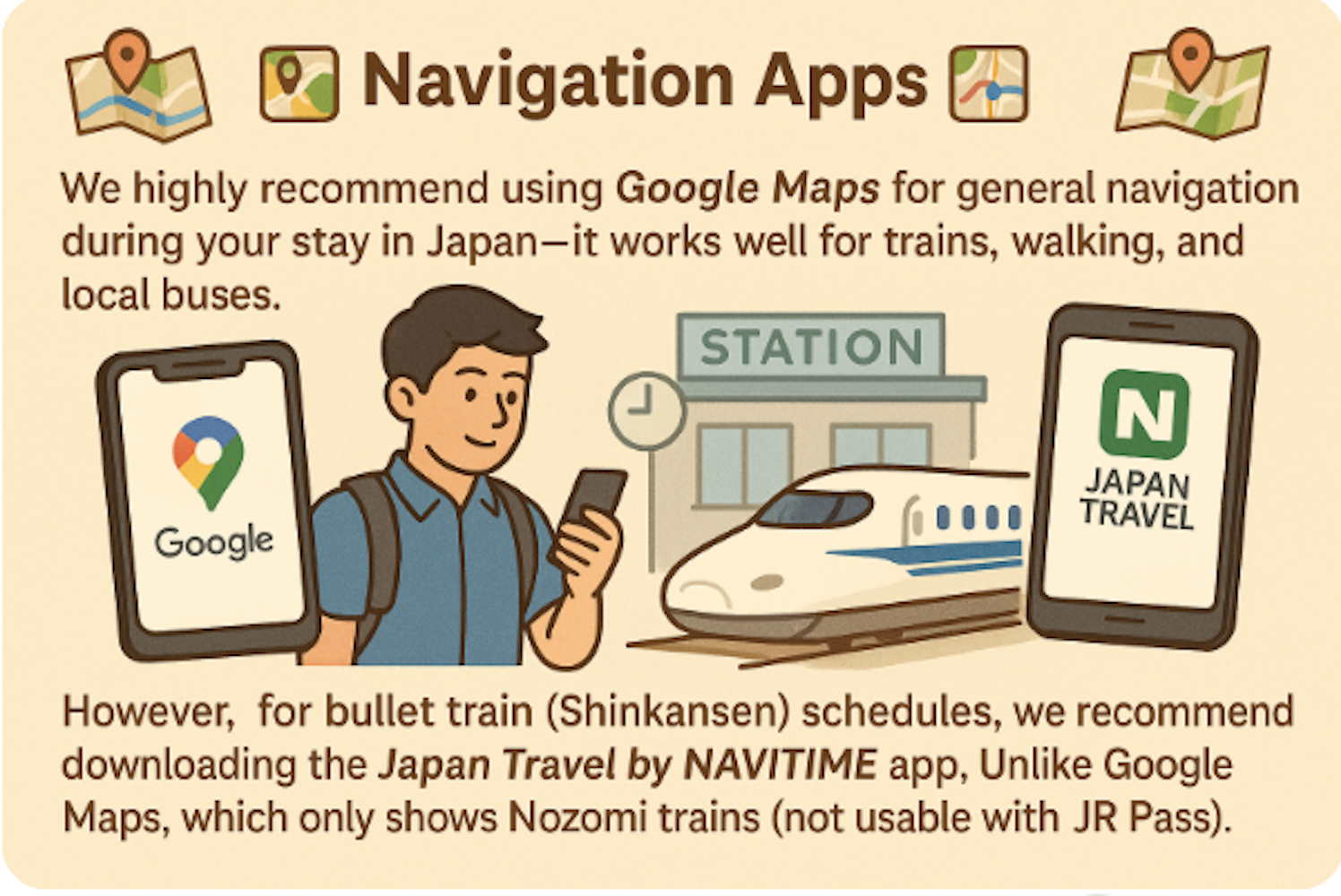
Getting around Japan can be daunting with multiple train lines, stations, and exits. While Google Maps is widely used, NAVITIME Japan Travel offers more Japan-specific information.
Why NAVITIME is Helpful:
Train delay notifications in English.
Platform numbers, train types, and car numbers.
Suggested routes based on JR Pass eligibility.
Offline maps and route planning.
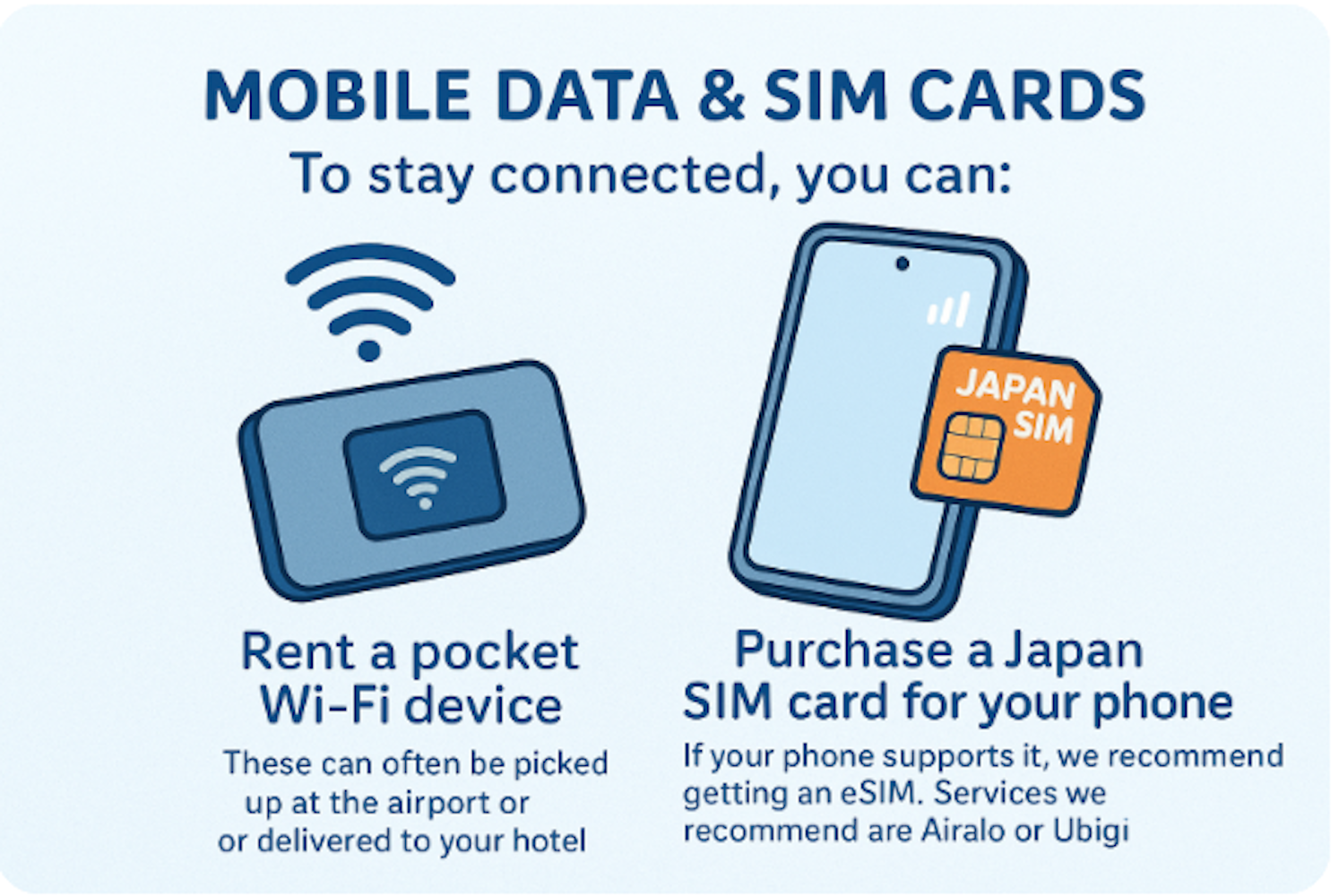
Having internet on your phone or device is very important when you’re traveling in Japan. There are three main ways to stay connected in Japan:
If your smartphone supports eSIM, this is the easiest way to get connected.
You can buy and download an eSIM plan online from providers like:
These eSIMs work right away once you land in Japan — no physical SIM card needed.
Plans usually include 1GB–10GB of data for 7 to 30 days.
If your phone doesn’t support eSIM, you can buy a regular physical SIM card when you arrive.
Available at airports, convenience stores, and electronics shops like Bic Camera or Yodobashi Camera.
SIM cards come with prepaid data packages, often with options for 7, 14, or 30 days.
You might need to change a few settings on your phone, but staff can usually help.
A very popular choice in Japan is Pocket Wi-Fi — a small portable Wi-Fi device that fits in your pocket and connects to the internet.
Connect multiple devices (great for families or friends traveling together).
No need to change your phone’s SIM card.
Strong signal and unlimited data (depending on the plan).
You can use it with your phone, tablet, and laptop all at the same time.
Rent it online before your trip and pick it up at the airport.
Some companies deliver to your hotel or Airbnb.
Return is easy — you just drop it in a prepaid envelope at the airport or a mailbox.

Unlock seamless connectivity across Japan with our tailored WiFi plans.
Tip: If you’re traveling with friends or using more than one device, Pocket Wi-Fi is often cheaper and more reliable than buying several SIM cards.
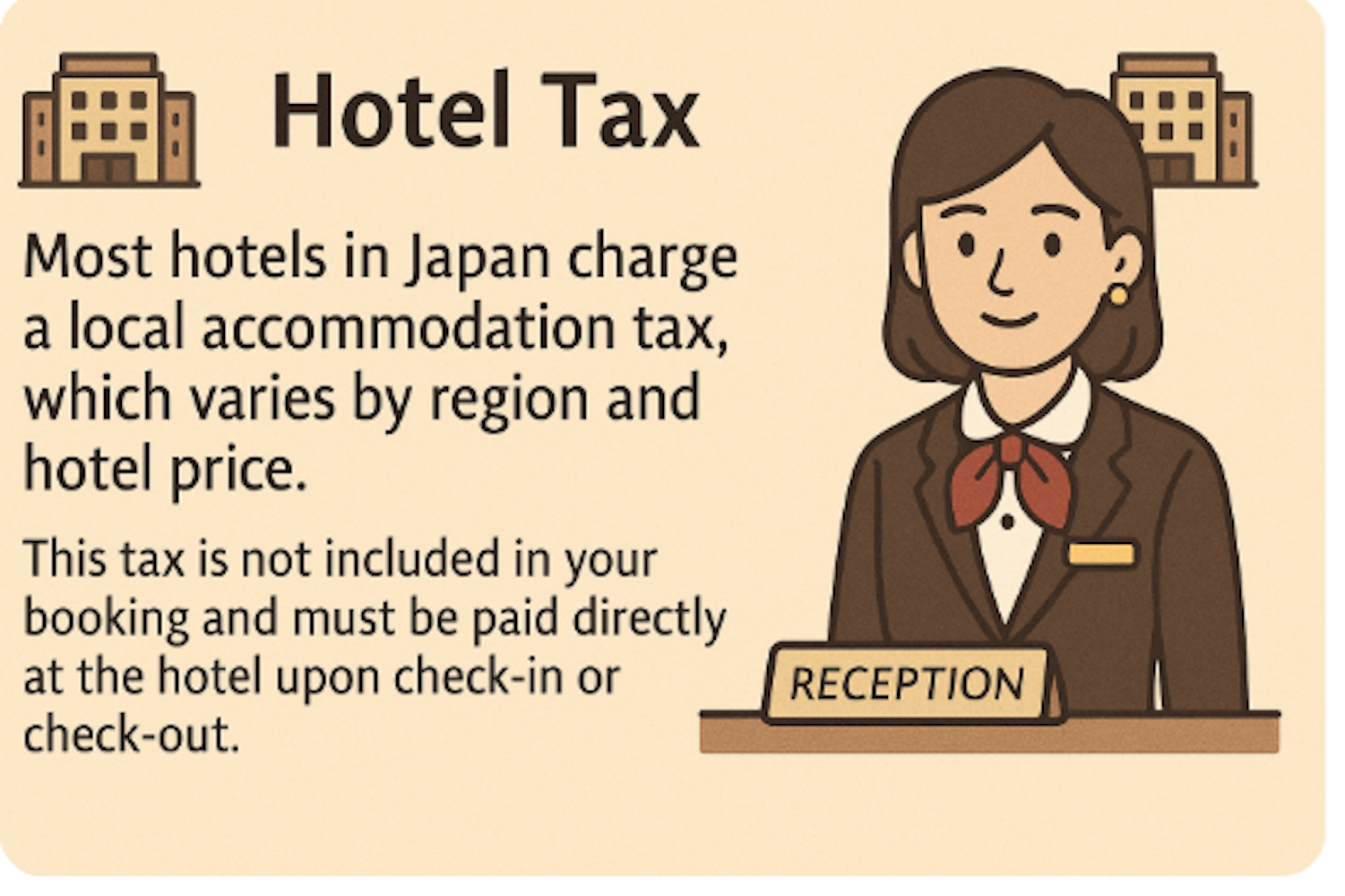
Japan imposes a local accommodation tax, which varies by region and hotel type. It’s typically a small amount (¥100–¥500 per night) and is either included in your booking or charged at check-in.
This tax is mandatory and usually not covered in third-party booking site prices.
Japanese hotels and ryokan may request passport verification upon check-in.
Shoes are removed in certain accommodations, especially ryokan (traditional inns).
Pro Tip: If staying in a ryokan or minshuku (family-run guesthouse), familiarize yourself with Japanese etiquette like bathing order, wearing yukata (robes), and dining rules.
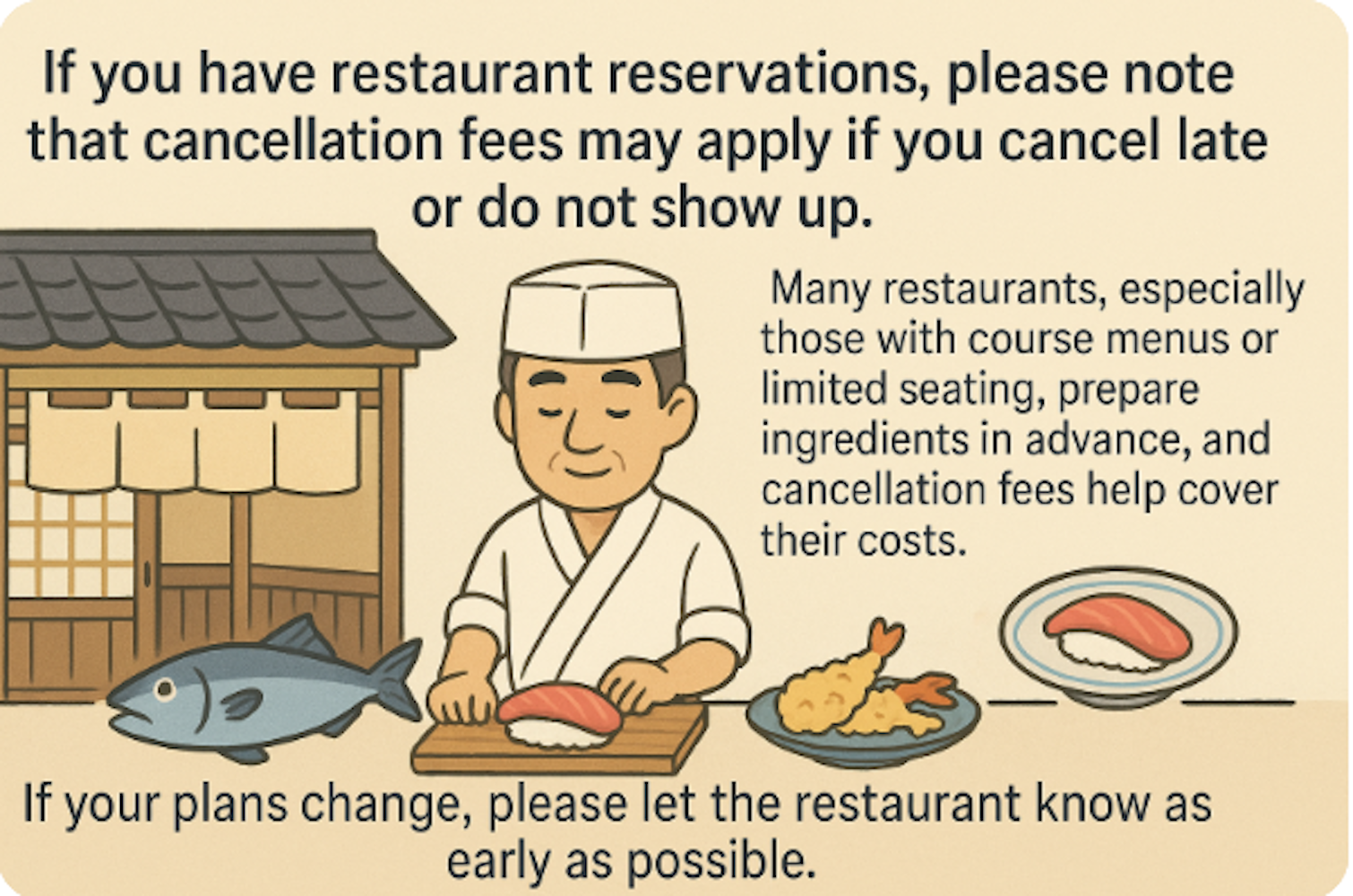
Japan is home to some of the best food in the world—sushi, ramen, wagyu beef, izakaya, and more. While you can often walk into casual eateries, popular or upscale restaurants often require reservations.
Important Notes:
Many top-tier restaurants require reservations weeks or months in advance.
No-shows or late cancellations often incur fees, and you (not your hotel or concierge) are responsible for them.
Some reservations can be made via TableAll, Pocket Concierge, or hotel concierges.
It’s not customary to tip in Japan.
Slurping noodles is polite—it shows appreciation.
Always say "Itadakimasu" before eating and "Gochisousama deshita" after finishing.
Many restaurants do not accept credit cards, so carry some cash (yen).
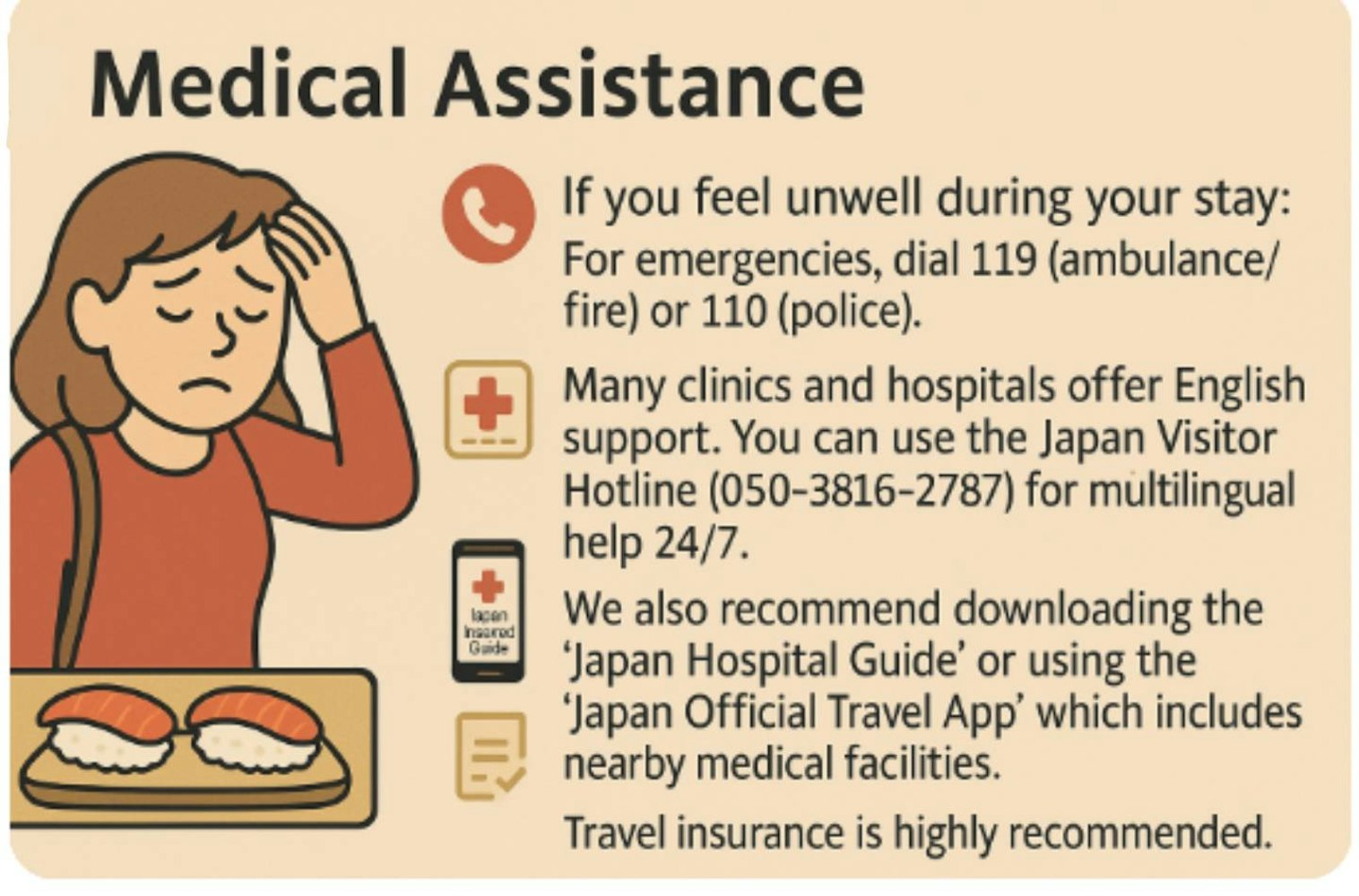
No one wants to get sick on vacation, but it’s best to be prepared. Japan has excellent healthcare, but access can be confusing for non-Japanese speakers.
Japanese pharmacies (kusuriya) are well-stocked with over-the-counter medicines. Pharmacists often use translation apps to assist foreigners.
Directory of Japanese OTC Medicines
Japan has a number of international clinics with English-speaking staff. Here are a few to keep in mind:
📍Inside Tokyo Station, B1 Floor
📞 +81-3-6206-3070
🕘 9:00 AM – 9:00 PM (last entry 8:30 PM)
🩺 Internal Medicine, Pediatrics, Travel Medicine, Emergency Care
📍7F, Itech Echo Building, Osaka
📞 +81-6-6732-8296
🕒 Open Wed–Sat with varying hours
🩺 Internal Medicine, ENT, Orthopedics, Dermatology, Vaccinations
📍248 Ebisucho, Nakagyo-ku, Kyoto
📞 +81-75-231-1624
🕘 Mon–Fri (9:30 AM–12:30 PM by appointment)
🩺 Neurology, Surgery, Gastroenterology, Pain Clinic
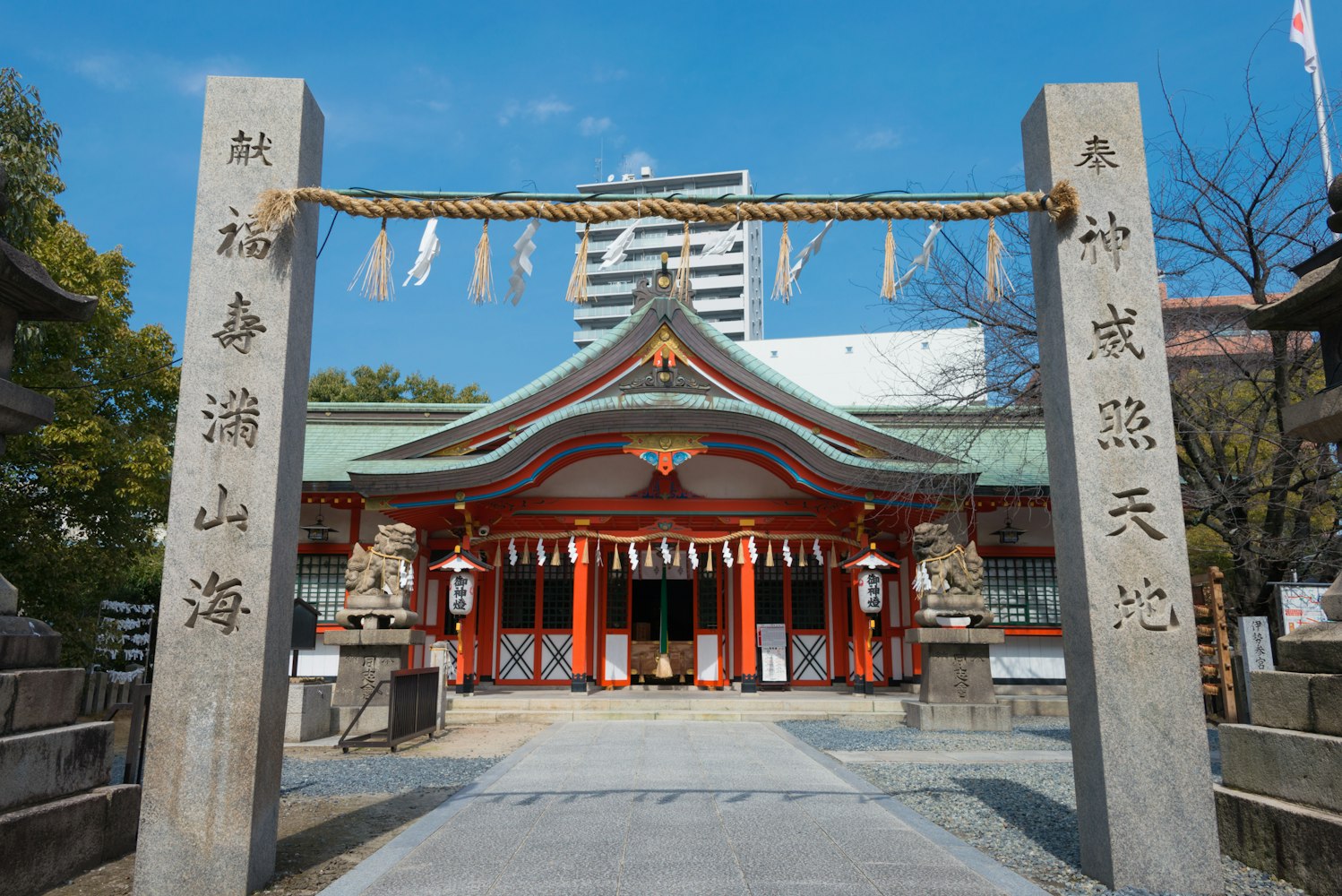
Japan is welcoming to tourists, but cultural sensitivity goes a long way in ensuring a good experience for everyone.
English is spoken in touristy areas, but not everywhere.
Download Google Translate and use the camera function for reading signs and menus.
Learn a few basic Japanese phrases:
Hello: こんにちは (Konnichiwa)
Thank you: ありがとう (Arigatou)
Excuse me/Sorry: すみません (Sumimasen)
Where is…?: …はどこですか (…wa doko desu ka?)
Always queue for trains and elevators.
Don’t talk loudly on public transport.
Do not eat while walking—eat in designated areas or sit down.
Respect personal space and quiet zones.
Bring a reusable bag for shopping; plastic bags may cost extra.
Japan is still a cash-heavy society despite its technological edge.
The currency is Japanese Yen (¥).
Many restaurants and small businesses do not accept cards.
Use 7-Eleven ATMs or Japan Post Bank ATMs for foreign cards.
Pro Tip: Always carry some small denominations—coin-operated lockers, vending machines, and public transportation often require exact change.
Japan is one of the most rewarding countries to visit, rich in culture, technology, cuisine, and hospitality. Preparing ahead can mean the difference between a frustrating experience and an unforgettable one.
From using a Suica card and navigating public transit to handling restaurant etiquette and staying connected, this guide covers the essentials you need to travel smarter.
So pack your bags, brush up on your “arigatou” and “sumimasen,” and get ready to experience the adventure of a lifetime in Japan.

